Editor’s Note: This text course is an edited transcript of a live webinar. Download supplemental course materials.
Dr. RaDora Dinnan: At the end of today’s course, you should be able to describe the most recent innovations available in the Phonak Audéo family, describe the different form factors available in the Phonak Audéo family, and describe what features are available at different levels of technology in the Phonak Audéo family.
Relevant Needs
Here is a look into what drives our innovation. We conducted an external study in five different countries (United States, France, Germany, China, and Japan). We surveyed 1,800 people to find out what was most important to them. These were both non-hearing aid users and hearing aid users. All were 40 years and older, as well as a mix of male and female participants. Some of the most important single needs that we identified were that patients are seeking easy listening situations, such as one person in quiet or noise or listening to the TV. They would like natural sound quality without whistling, comfort in sound and loud environments, and to be able to detect speech. They wanted the hearing aid to adapt to changing needs based on their environment, and they also wanted instruments that were durable, secure in fit, and comfortable.
Taking that information along with data from external studies (Kochkin, 2007; Hickson, Clutterbuck, & Kahn, 2010), Phonak’s mission is to improve the lives of the hearing impaired by providing the best products and services to you, the hearing health care professional. We want to provide solutions that address patient needs. We want to be able to improve speech intelligibility, even in the toughest listening situations.
The Ideal Hearing Solution
For our new innovation, we needed a solution that would offer a seamless listening experience through easy operation. This is done through automated programs to ensure that users can capitalize on the benefits of their hearing devices.
The important needs are natural sound quality, recognizing the sounds in their daily lives, and adaptation to their changing needs. Another need is for no feedback; this was primarily from non-hearing aid users. They want devices that are easy to handle and adjust. They would also like longer battery life, as well. They would like an appealing design in shape and color and to be able to wear it without others recognizing it.
Finally, they want easy cellphone use. This is important for the connectivity issues that your patients face today. They do not want to be hindered by their hearing loss. These needs were found in 970 non-hearing users and 830 hearing aid users from our survey. The new Venture platform provides those solutions.
Venture
One way to increase performance is to introduce a new chip with higher specifications and capabilities. The Audéo V is built on this new chip. We increased the computational power and have better battery life, up to 30% reduction in power consumption when streaming. We also have a new analog-to-digital processor. We will talk about this more when we discuss the music program in the Audéo Venture.
Figure 1 shows an evolution chart of where we have come from the Palio platform, which included Savia and Art products, up through the Venture, which includes the Audéo V. The number of transistors and operations per seconds has vastly increased. We have made a huge leap forward in technology with this new chip.

Figure 1. Comparisons of Phonak platform performance over the years.
Automation Technology
Phonak has been using automatic behavior since the 1990’s. We started with AutoPilot, which was a way for patients to access more than one program discreetly. We were addressing the desire for a hearing aid that adapted to their changing environments. Then we moved into SoundFlow, which was the first automatic program that could blend the portions of different programs to create an optimized and personal response to the individual’s sound environment. Next is AutoSense OS. This is a new operating system which drives the features and programs, offering more seamless benefits of amplification for hearing aid wearers.
Figure 2 is a look at the acoustic scene analysis. The left side is the brain’s interpretation of sound, which is a complicated process. On the right is AutoSense OS. It tries to mimic the way the brain is analyzing an acoustic scene. Effectively, we use acoustic scene analysis to support auditory scene analysis for hearing aid users with AutoSense OS.
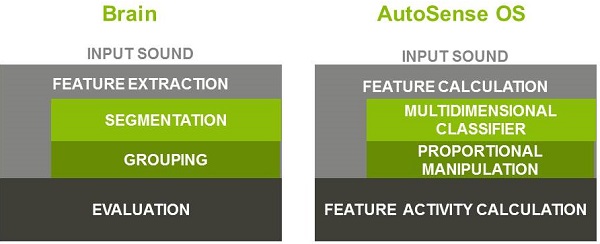
Figure 2. Auditory and acoustic scene analysis comparison of the brain and AutoSense OS.
AutoSense OS
Accuracy and Precision
Accuracy is how many sound environments a hearing aid can correctly identify. You would think this is easy, such as, “Am I in noise, or am I in quiet?” It would be easy to accurately identify these two environments. However, something more difficult would be, “Am I in a noisy car or a noisy café?” These are difficult situations, and that is what the hearing aid is trying to interpret by variations in the input. We want to accurately recognize and precisely optimize the settings for that patient for each sound environment.
Figure 3 is an example of a patient’s listening environment with AutoSense OS. This soundscape shows if they are in quiet or noise. You can see the gradual microphone shift from omnidirectional to directional when the noise starts. That is what some of the hearing aids with AutoPilot were trying to do, but they made an abrupt shift from one program or microphone mode to another.
With SoundFlow, we started to change that hard switching to a blending program. A patient moves through many different environments in their day-to-day life. They are not always in quiet, and with AutoSense OS, there can be blending of a quiet environment into a noisy environment, or leaving a noisy environment into a quieter environment. The white line in Figure 3 shows the ability of AutoSense OS to adapt to the patient’s changing soundscape.
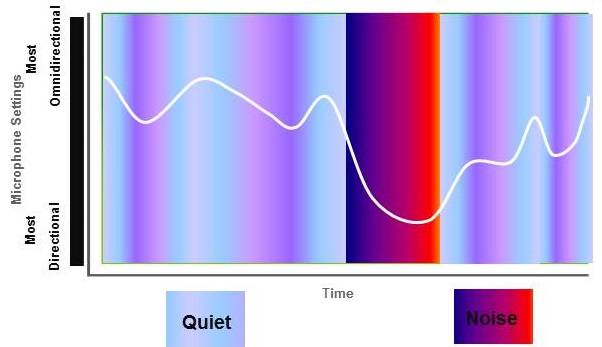
Figure 3. A patient’s soundscape represented in periods of quiet (light blue) and noise (rainbow). The white line depicts the microphones gradual movements from omnidirectional to directional strategies.
Binaural Directionality
AutoSense OS utilizes binaural directionality approaches. The first is Binaural VoiceStream technology, which is a four-microphone system where the information is shared from one hearing aid to the other. This is an innovative way to use wireless technology with streaming. Binaural synchronization, by comparison, is an exchange of control signals. We go into an environment and the left hearing aid says the environment is music, which prompts the right hearing aid to switch into the music program. We are able to incorporate the Binaural VoiceStream technology with the binaural synchronization simultaneously. We are taking both binaural features and using them in combination. Speech in Car, Music, and Speech in Loud Noise are the three programs that will use the binaural synchronization.
Program Structure
We have many different program structures with AutoSense OS (Figure 4). The two new programs in the 90-level devices are Speech in Car and Comfort in Echo. Speech in Car reduces broadband noise in a car to create a stable listening environment. Comfort in Echo recognizes reverberation and applies gain reduction. Figure 4 shows the different programs within the V90 Audéo family.

Figure 4. Description of the AutoSense OS programs.
Speech in Loud Noise. The first program is Speech in Loud Noise, which was previously StereoZoom. This is the beam-forming technology with a narrow beam of directionality to the front. In Speech in Loud Noise, it is adaptively suppressing noise from the back and from the sides. It is activated within AutoSense OS by default, but can be changed within the Target software.
Figure 5 shows the Fixed Directional Beamformer. In a perfect world, you would see the polar plot of the diagram on the left. There is a person in the middle who is communicating with someone directly in front of him. For it to work most ideally, the noise needs to be directly behind him. Attenuation of noise at the null point, 180 degrees from the input, leads to the best improvement in signal-to-noise ratio. However, we know that this perfect scenario rarely occurs in real life. There can be more diffuse noise situations.
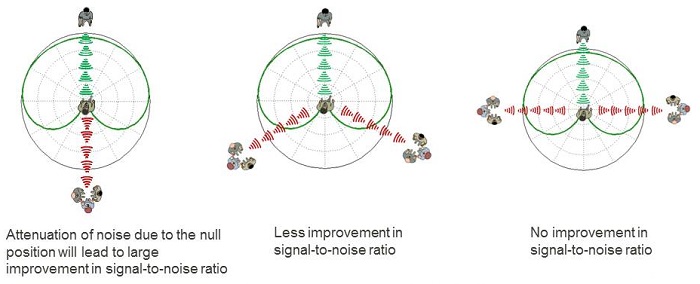
Figure 5. First generation StereoZoom patterns (fixed directional beamformer), with the noise coming from directly behind (left), 60 degrees from either side behind (middle), or 90 degrees out to either side (right).
The middle example in Figure 5 now shows the speaker in front of the listener with competing sounds at 60 degrees from the rear. You can see that some of that information is still in the polar plot with him. This scenario would provide less improvement in the signal-to-noise ratio.
The diagram on the right in Figure 5 shows noise directly out to either side of him. There is no improvement in the signal-to-noise ratio at all. The speech input is coming from directly in front of him, but he is also getting the noise from the sides.
AutoSense OS has an adaptive directional beamformer for Speech in Loud Noise. We have taken the best of UltraZoom, which is our directional adaptive microphone system, and paired that with StereoZoom or Speech in Loud Noise. The beamformer maintains the maximum gain reduction from directions of the greatest noise sources. We are using those adaptive null points to help cancel out the noise and improve the signal-to-noise ratio.
The adaptive directional beamformer patterns are shown in Figure 6, and the first example on the left is still ideal. With the adaptive null points in the middle example, we are able to shift the null points to where the noise is coming in, so the greatest signal-to-noise ratio improvement comes when the person is speaking to the person in front of him, which is what we want. In the polar plot on the right in Figure 6, we can adapt those null points to the side where the noise is, so we still get the information coming from directly in front.
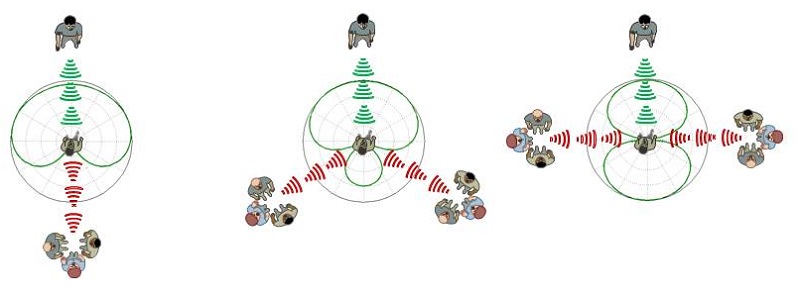
Figure 6. Polar plots for AutoSense Adaptive SteroZoom (adaptive directional beamformer).
Microphone Modes
Figure 7 shows the different microphone modes available in the Venture hearing aids. Real Ear Sound compensates for the lost pinna effects that occur when you place a behind-the-ear (BTE) hearing aid on an individual. You will only find this microphone option for a receiver-in-the-ear (RIC) or BTE device.

Figure 7. Comparison of Venture microphone modes.
UltraZoom is our directional microphone, and it creates a beam in front with the adaptive null point in the back. Then we move to Fixed StereoZoom, which is where the information is directly in front, with the very narrow beamformer utilizing null points from angles in the back. Adaptive StereoZoom combines the adaptive null points with a very narrow beam of directionality.
Speech in Loud Noise
The hearing aid will go into Speech in Loud Noise automatically. You have to have two hearing aids for the four-microphone system. There has to be an 80% speech-in-noise environment detected with at least a 67 dB noise floor. Once that happens, the hearing aid starts a timer for 15 seconds. If those criteria persist, it will automatically go into Speech in Loud Noise. If one of those criteria drop out, it will count for 20 seconds before it opens back up into the most appropriate environment. You may think 20 seconds is a long time, but if you are in a restaurant where there is live music and they change songs, the 20 seconds is going to account for some of that delay so the patient is not noticing any pumping action that happens there.
Comfort in Echo
Comfort in Echo is a new program within AutoSense OS for the V90. It can be blended with other programs with no change in the gain settings. It attempts to reduce the disturbing effects of reverberation in large rooms with reflective walls and ceilings. This is not a feature to improve speech intelligibility as much as it is designed to help reduce listening effort for patients who are in difficult listening situations.
Comfort in Echo is trying to get rid of the negative effects of reverberation on amplification. It is looking for tails or pauses in the signal, which note that an echo is happening, and it helps to reduce those. Many homes today have high ceilings and hardwood floors/tile floors. This could help your patients tremendously, even at home.
Speech in Car
Another new feature is Speech in Car. This program will reduce listening effort in a car. It will provide a steady listening environment for your patients. Speech in Car uses the binaural synchronization, so it requires two hearing aids, and the probability that the user is in the car has to be 50% or greater. This means the hearing aids detect the road noise and the noise happening behind them. Once it is determined that the listener is in a car situation, the hearing aids will start a timer for 20 seconds and go into the Speech in Car program automatically.
Once the probability drops down to 30% or less for 40 seconds, it will open up into the most appropriate AutoSense OS program. It has determined that the person has stepped out of the car or that the 40 seconds may be at a stoplight. Again, this is used to help avoid the pumping action that happens. It uses the binaural synchronization to get both hearing aids to go into the Speech in Car program.
Music
Music is important to patients, and it is a very personal experience. It becomes difficult when someone has hearing loss and they need to wear hearing aids. Many manufacturers have continued to improve their response to music and speech intelligibility over time.
We have a new music program as a result of our analog-to-digital converter in our new chip. We have a high input limit, an increased dynamic range, and compression with variable release times. The different directionality microphone modes are available as well. Whistle Block is an independent adjustment within AutoSense OS. One of the nice things about the new Venture products is that you can make changes in the Program Option screen for each program independently.
It uses binaural synchronization to access into the music program. The Audéo V has to detect that at least 50% of the incoming signal is music. It starts a timer for 25 seconds, and if the music is still present after 25 seconds, it will change into the music program. If the music is 30% for less than 10 seconds, then it will drop out of the music program and go into the most appropriate AutoSense OS program.
Audéo V
Highlights
With the Venture launch, we are releasing the RIC products. We have four different form factors: Audéo V-312T, Audéo V-10, Audéo V-13, and the Audéo V-312. All models have a push button option. The Audéo V-13 has a separate volume control and push-button functionality. The Audéo V-10 is wireless, and it does have binaural VoiceStream technology within the 90, 70, and 50 levels. We added a high-tech, composite material to the design of these cases. The tinnitus balance is available in all of the Audéo V models.
The V-10 (Figure 8) has a push button control, which is new. It has full wireless capability, not just the binaural VoiceStream technology, and also accessories. It does have an IP57 rating, so it is dust tight and submergible in up to 1 meter of water for 30 minutes.
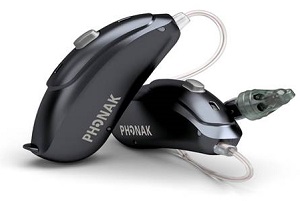
Figure 8. Audéo V-10.
Figure 9 shows the fitting ranges for the three receivers that we have. The standard receiver, power receiver, and the super power plus receivers are all compatible with the Audéo V. The super power plus is a previous receiver that was recommended for the Naída RIC. There are many great coupling options with our domes, our SlimTips, and our cShells. The cShell is required for the super power plus receiver.
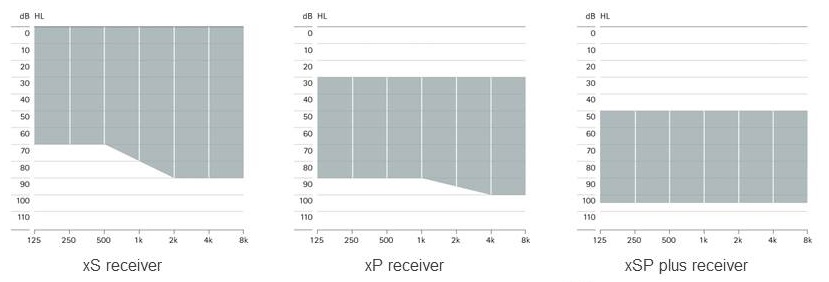
Figure 9. Fitting ranges for Audéo V receivers.
Figure 10 is a summary of the feature offerings by technology level. The 90 level has seven programs within AutoSense OS and 20 channels. With nearly every platform launch, you will see some of the premium features shift down into lower technology levels.
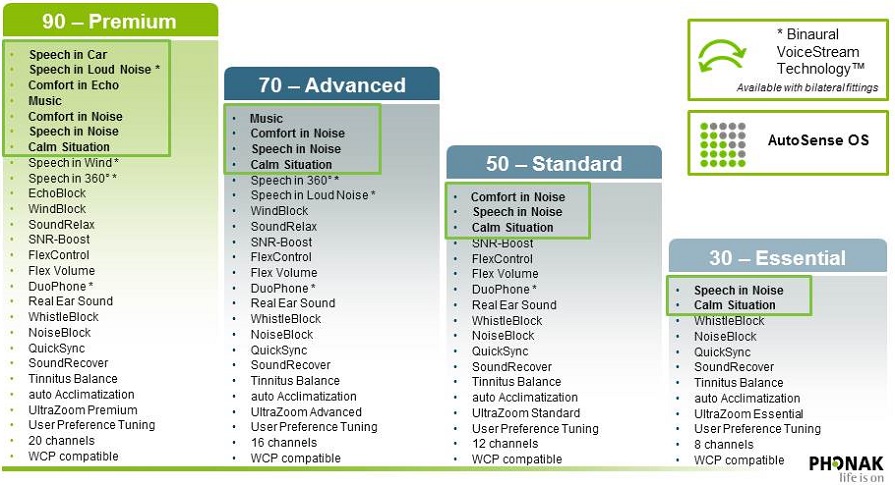
Figure 10. Feature offerings in the four technology levels.
The V70 now has four programs within AutoSense OS, including music. The V50 level has three programs, Comfort in Noise, Speech in Noise and Calm. It is much like the old Q70 level. Notice that the V30 level has AutoSense OS, so that seamless blending is available for patients who are cost conscious and who need an affordable solution. Previously, the Q30 would go from omnidirectional to directional microphone modes only. There was no blending. Another thing to note is that there is no binaural VoiceStream technology in the V30, but it is available in the V50, V70, and V90 levels.
One of the things that was important to hearing aid users and non-hearing users alike is power consumption. With the Audéo V, we do see up to 30% less power consumption when streaming as compared to the Quest platform (Figure 11). You can see the reduction in power consumption between the Audéo Q-312T, the Naida Q RIC, and the Venture.

Figure 11. Power consumption comparisons between the Quest and Venture platforms.
The list of features between styles on the V platform is shown in Figure 12. The Q-10 does have binaural VoiceStream technology features and wireless programming. Because size is important, it can only be programmed using the new iCube II. There is no programming port for wires in the V-10. It has a push button functionality and the super power plus receiver is compatible with the 312, the 312T, and the V-13. The V13 does have a volume control option, which is something that has been highly requested in a RIC device.
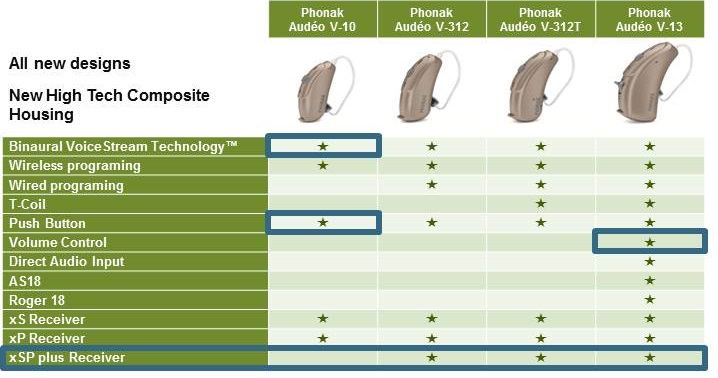
Figure 12. Comparison of available features for the four RIC Audéo V products.
Figure 13 shows our shell colors. We still have the same Quest colors, but because it is a new composite material, it is opaque in nature. Therefore, we do not have the transparent clear, purple or blue anymore.
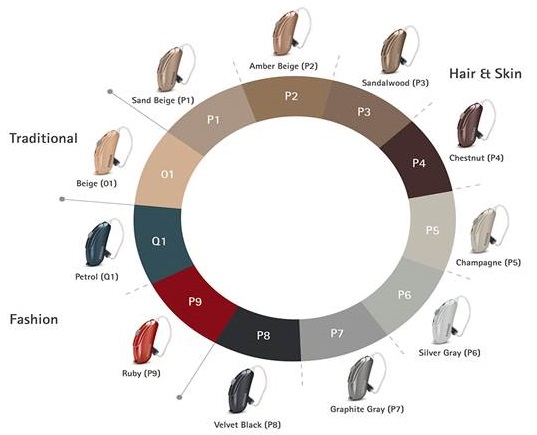
Figure 13. Audéo V color palette.
We also have a new hard case and user guide (Figure 14). In the middle of the case, there is a tool and a separate battery storage compartment. The simplified user guide will help your patients better understand their new hearing aids.
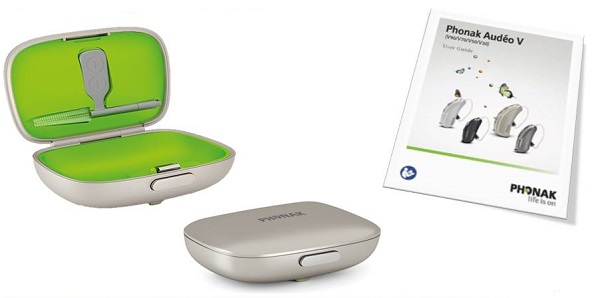
Figure 14. New hard case and updated, simplified user guide.
Wireless Communication Portfolio
With a new chip, there are also new wireless accessories. These accessories have a seamless integration with the Venture hearing aids. When we received less power consumption within the hearing aids, we then wanted to see less power consumption when using accessories. One of my colleagues in Switzerland has been using the new products. She said, “With the new ComPilot II, the transitions are much faster.” This means less delay that what was experienced with the original ComPilot.
Figure 15 shows the solutions, divided in to phone, TV and music, conversation, and control options.
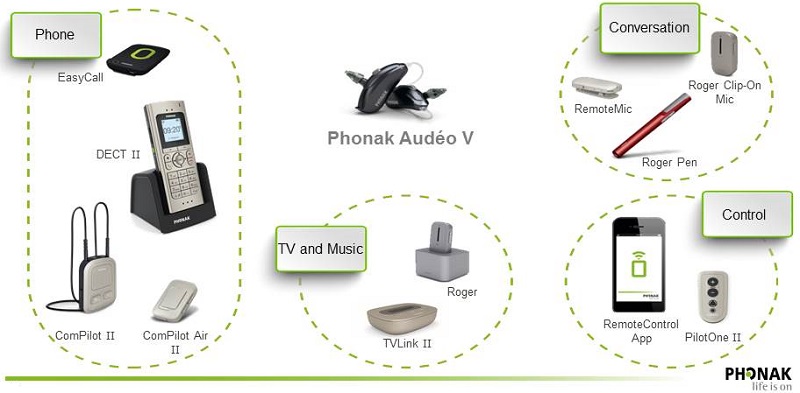
Figure 15. Overview of the Phonak wireless communication portfolio.
EasyCall
Phonak EasyCall is a new addition and is a universal cellphone streamer. It connects to any Bluetooth enabled phone, including non-smart phones. EasyCall is compatible with flip phones and older generation phones that may not have Bluetooth, as well as the Jitterbug phone. This is an external piece that connects to your phone with an adhesive. There are designs for cases for the iPhone 4 and 5 and a couple of the Samsung phones.
There are two versions of EasyCall. EasyCall II is for Venture, and we will also have a backwards compatible version, the EasyCall, for Spice and Quest products. Note that EasyCall will not work with Core products. These are available in early 2015. The EasyCall will make any cellphone behave and sound like the DECT phone.
ComPilot Air II
Next we have the ComPilot Air II, which is also new. You may know that the ComPilot as our streamer, and you are used to the streamer with a neckloop. The ComPilot Air II does not have a neckloop. It is a clip-on streamer and remote control for any Bluetooth-enabled device. It has simple remote control options for the hearing aid. It is compatible with the RemoteControl app. A new feature within the ComPilot II and the ComPilot Air II is you can direct dial a preferred phone number by storing it in the program memory, like speed dial. It does have about four hours of streaming time.
ComPilot II
The ComPilot II looks very similar to the standard ComPilot. It is our multipurpose streamer, with integrated instant streaming demonstration capabilities. You can directly call a preferred phone number. There are 24 hours of streaming time. The original ComPilot had eight hours of streaming time. Another new feature is that a long press of the volume control will attenuate the external hearing aid microphones so that whatever they are listening to through the ComPilot will be the primary auditory focus.
The ComPilot II will support two phones in parallel while connected to the TV Link or RemoteMic. It is also compatible with our RemoteControl app.
Figure 16 shows a comparison of the ComPilot II and the ComPilot Air II. The ComPilot II is geared towards TV, phone, and music and has been optimized for FM for use with the Roger universal receiver. The ComPilot Air II has no neckloop, four hours of streaming time, and the focus is only on Bluetooth for using the phone and TV.
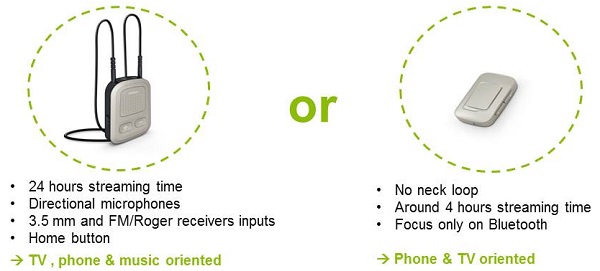
Figure 16. ComPilot II and ComPilot Air II comparison.
DECT II
We have a new DECT phone, called the DECT II. With this device, you can instantly demonstrate the benefits of hearing in both ears. If you have not seen this demo, please reach out to your territory manager or clinical trainer to show you how to demo these accessories. It makes a big impact on your patients, and they can see the benefit and the value there in your office. The DECT phone has been shown to get 40% more speech understanding on the phone. We have a white paper that supports this (www.phonakpro.com). It is binaural transmission of the sound simultaneously to both ears. There is reduced noise and maximum understanding for your patients.
TVLink II
The Phonak TVLink II is the new TV base station. It has multiple input signal options, including optical (Toslink), digital coaxial, and analog. HDMI is not supported on this device, however. The TV Link II base station uses standard Bluetooth protocol. It is compatible with the current ComPilot. The one exception is that you are not able to charge the existing ComPilot in the TV Link II base station. The new ComPilot II and the ComPilot Air II use a micro-USB charger, versus the ComPilot which uses a mini-USB charger.
RemoteMic v2.0
The RemoteMic version 2.0 is available as well. It uses the standard Bluetooth protocol and is compatible with the ComPilot, ComPilot II, and the ComPilot Air II. There is a new default volume level of 8 versus 11 in the previous model. It is ideal for a distant speaker, up to 20 feet away. This is more ideal for more moderate noise levels and over distance.
RemoteMic and Roger are not the same thing. If you are in a quiet environment, face-to-face, the hearing aids are going to be in omnidirectional microphone mode. If you are in a noisy restaurant, they will go into the directional microphone mode, focusing on what is in front of you. If you are in a very loud bar, it will go into the Speech in Loud Noise, or StereoZoom, program. The hearing aids take care of everything fairly well when face to face. But over a moderate noise level, we recommend the RemoteMic (Figure 17). However, if you are in extremely noisy situations like a loud bar, this is when Roger is an optimal solution for loud noise and over distance.
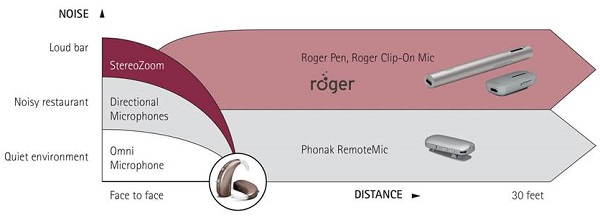
Figure 17. Comparison of Roger and RemoteMic for communication over distance.
Roger
Roger is available as the Roger Pen and Roger clip-on mic. For more information, reach out to your territory manager or clinical trainer. We did have integrated receivers for any BTE device with a 13 battery or bigger. Now we have the V-13, which has the size 13 battery. We have a new integrated receiver, the Roger 18 integrated receiver (Figure 18), which will be available in early 2015. We will also have an audio shoe available in early 2015 for the Audéo V-13.
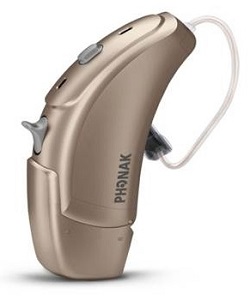
Figure 18. Roger 18 integrated receiver.
RemoteControl App
With the RemoteControl app, there is no direct fitting required. You do not have to do anything within the Target software other than connect the ComPilot II or the ComPilot Air II and identify it with the hearing aids. It will then automatically send the information from the streaming device to the app. There are many connectivity and control options within the app. The app is available on both the Android and iPhone platforms.
For your patients with the ComPilot, you had to go in and change all the program options. Now they will have the capabilities to do that from the app itself. It gives them a lot of freedom and control for their hearing aids. If they have the Speech in 360 as a manual program, which is what we are calling ZoomControl (focuses on the most dominant speaker even when not facing them), they can control the direction that the hearing aids are streaming from the app. Those who want more control over their devices will be able to have it with this app.
PilotOne II
PilotOne II is our simple remote control. It adjusts volumes and program settings of Phonak hearing aids. It has large with easy-to-push buttons. It uses one AAA battery. Please note that you have to identify that in the software with the hearings aids through the programming port in the battery compartment.
Figure 19 is a picture of the new device. There is an up and down button for volume. The circular button in the middle changes the program. There is also a home button if they cannot figure out what happened and would like to go back to AutoSense OS. One the side, we did put a green indicator at the slider bar. Now it is easy for patients to know if it is on or off from a visual standpoint. The same thing is true for the RemoteMic as well.
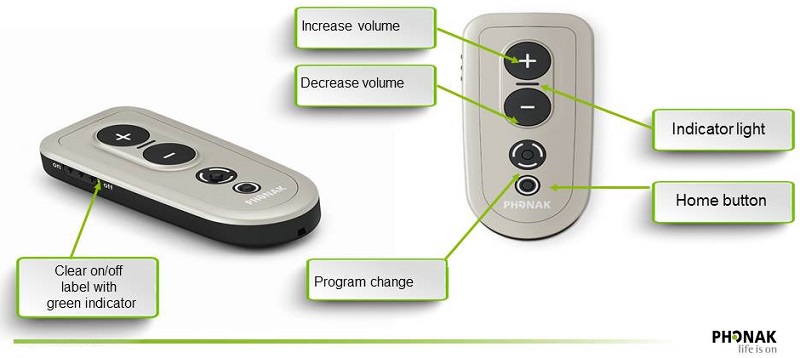
Figure 19. PilotOne II.
Target 4.0
With the new platform comes new software. Target 4.0 software can be downloaded from your current version of Target with an Internet connection. However, it is an extremely large file. Launch boxes are in the process of being sent, which contain a physical copy of the software for you to download if you would like to wait for a disc.
There is an updated look and feel in Target 4.0. We took recommendations from our fitters who use it the most and made a focus back on the essentials of the fitting. There is less visual noise. There could be two to three different ways to find something in the software, so we have cleaned up some of that clutter. There is a consistent dashboard.
Some of the color schemes are a notation that action is required. That usually will be if you need to connect the hearing aids or need to recalculate. The orange color will prompt you to action. The blue color will give you information. The pop-ups are blue. We have labeled those as what you would like to do for the software.
iCube II
The fitting interface with the Venture products is iCube II. This will also go out with your first Venture order. It is a true plug-and-play device that has a dedicated Bluetooth USB adapter. It has reliable wireless connectivity. There is a light pattern similar to the NOAHlink in red and blue colors versus the orange light.
In Figure 20, you may notice that it looks similar to our ComPilot. You can pull the cord out from the side to go around a patient. There is also a back closing on the neckloop. You have a dedicated pairing button, and it uses a mini-USB charging port. Again, the iCube was a micro USB, and this is the mini USB. There is a charging dock that comes with it and a USB hub to help with different fitting accessories that need to be plugged into USB.
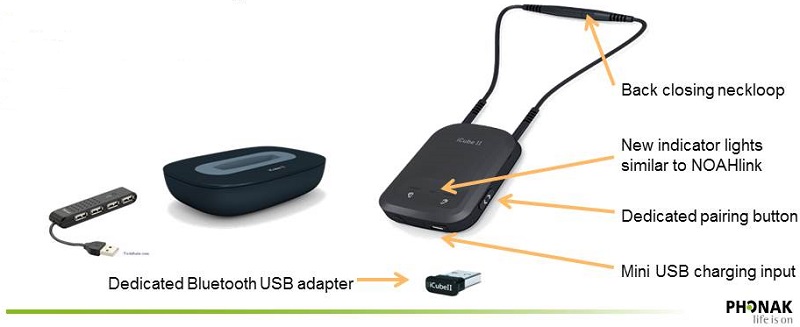
Figure 20. Phonak iCube II.
The iCube II is for anything that is programmed in Target. You can program Spice, Spice+, Quest, and Venture devices with the iCube II. To program something in the Core platform, which is programmed using iPFG, you will have to use the iCube. Note that the Audéo V-10 can only be fit with the iCube II. You need to switch off all the wireless accessories while you are utilizing the iCube II.
Additional Features
There were a few miscellaneous features I wanted to mention. Remember that with Audéo V, we have the tinnitus balance noise generator. This is for those of you who are working with tinnitus patients. All of the Audéo V products have EasyPhone. If the phone has a strong enough magnet, it will automatically switch into the DuoPhone program for the 50, 70, and 90 level devices. DuoPhone is a program where the patient will hear the phone in both ears from their hearing aids.
When you are going to measure a patient’s ear to determine the receiver size, we recommend that you measure to the very top entrance of the ear canal. We have found that 80% of our cShell remakes were due to incorrect receiver lengths. We do have size 0, 1, 2, and 3 receiver lengths. For a standard receiver, you can use a number of different coupling options including open domes, cShell, closed domes, and SlimTip.
Lastly, SoundRecover is our nonlinear-frequency-compression technology that we introduced in 2007. All of our products at all the performance levels have Sound Recover. It is a feature that we believe in to help patients that need high-frequency emphasis due to their hearing loss.
Summary
This portfolio has something for everyone. If you want the connectivity options, we have different accessories for you. For single-sided deafness, we still have our CROS. If you have first time users, we have many different products available such as the Audéo V, the Bolero Q, Virto Q, and Lyric. For experienced users, we have the Audéo V. The Venture launch is only for our RIC products.
As I mentioned, at PhonakPro.com, on the Evidence tab, you will find information on peer-reviewed, non-peer-reviewed, our field of study news, white papers, et cetera. You can also break it down by topic.
With that, we ask you to join our Venture. If you need more information, please reach out to your inside sales rep, your territory managers, and clinical trainers. We are happy to provide you with information and answer any questions.
Questions and Answers
Can the microphone covers be replaced in the office?
There are no mic covers that are replaceable in the offices. The products do go through rigorous testing for durability and reliability before they are released. If something is found during that testing, we explain that the mic covers need to be changed periodically. We have not seen any of that with the new Audéo V products.
Can we get color exchange kits?
You cannot get color exchange kits. To exchange the color, you have to send the device into the manufacturer.
Is the push button configuration the same on everything but the 13?
Yes. You have the option of doing a push button for programs or doing a push button for the volume control, where the right raises and the left lowers the volume. In that instance, you do have some flexibility in that you can have a program button on one side and a volume control on the other side. The caveat would be that you have to determine if your patient will turn the volume up or do they want to turn it down, because it is one or the other.
You can have push button program functionality and volume down on the opposite side as one configuration. The other configuration is program and volume up on the other side. In those situations, it cycles up or down. It will cycle, cycle, cycle, cycle and go back to default, whether up or down.
References
Jerram, C. K., & Purdy, S. C. (2001). Technology, expectations and adjustment to hearing loss: Predictors of hearing aid outcome. Journal of the American Academy of Audiology, 12(2), 64-79.
Cox, R. M., & Alexander, G. C. (2000). Expectations about hearing aids and their relationship to fitting outcome. Journal of the American Academy of Audiology, 11(7), 368-382.
Picou, E., Aspall, E., & Ricketts, T. (2014). Potential benefits and limitations of three types of directional processing in hearing aids. Ear and Hearing, 35(3), 339-352. doi: 10.1097/AUD.0000000000000004
Joergensen, H.S., Baekgaard, L., & Bendtsen, B. (2013, June). Battery consumption in wireless hearing aid products – Datasheet vs. real-world performance. AudiologyOnline, Article #11899. Retrieved from https://www.audiologyonline.com/
Kochkin, S. (2007). Increasing hearing aid adoption through multiple environment listening utility. Hearing Journal, 60(11), 28-31.
Hickson, L., Clutterbuck, S., & Kahn, A. (2010). Factors associated with hearing aid fitting outcomes on the IOI-HA. International Journal of Audiology, 49(8), 586-595. doi: 10.3109/14992021003777259.
Cite this Content as:
Dinnan, R. (2015, February). Phonak Audeo: RIC solutions. AudiologyOnline, Article 13197. Retrieved from https://www.audiologyonline.com.


